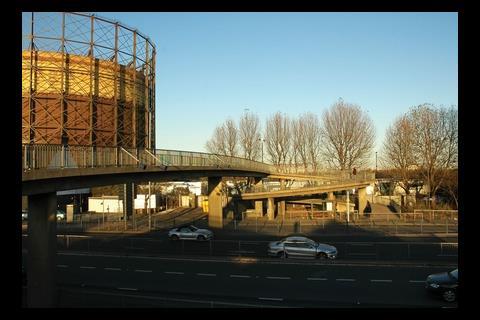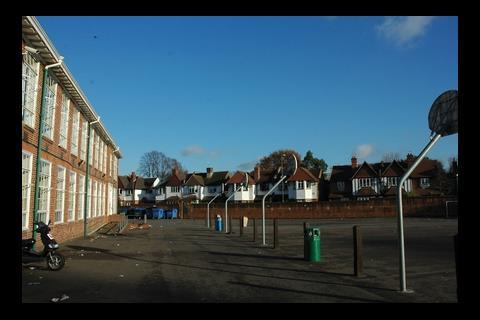Alistair Darling might be accelerating spending on Building Schools for the Future, but that won’t necessarily mean more schools get built, as this exemplary story of a scheme in Greenwich demonstrates
The announcement in the pre-Budget report that the government is to spend an extra £2.6bn on education projects next year must have come as a relief to many contractors. As must the news this week that the European Investment Bank has agreed a £300m funding package to help British schools projects hit by the credit crunch. Unfortunately, money is not always the problem.
So far, only 42 schools have been revitalised by the Building Schools for the Future (BSF) programme since 2004, which is a little off the pace, given that four and a half must be finished every week if 3,500 of them are to be upgraded or replaced by the government’s deadline of 2020.
There are a number of reasons for the slow progress, ranging from the sheer scale of the undertaking to the complexity of the procurement process. Another factor is that individual schemes are often complex political issues in themselves. Take the borough of Greenwich in south-east London, for example. Despite being in the first wave of the programme, not a single BSF brick has been laid, although Lewisham, its neighbouring borough, is about to open two new BSF schools.
One Greenwich school, the John Roan, has suffered particularly bad delays. The council wants to move it from its current site in a leafy residential area to a plot less than a third of the size yards from a busy dual carriageway and a gasometer. Parents are furious. They say the council has not considered keeping the school where it is because it stands to make £30m from the sale of the site. To make matters worse, the new school cannot be be occupied until the gas holder is decommissioned, but the gas company says it has no plans to do this.
Despite all this, the council is sticking doggedly to its guns. Meanwhile, the BSF money is running out. If Greenwich fails to get funding in time, John Roan’s pupils may miss out on the chance of a better environment and the industry on badly needed work. What follows is the story of how the project went wrong.
The decision to move
There is no denying that John Roan has problems. It is an unremarkable comprehensive with 1,150 pupils, located on two sites on either side of a residential street next to Greenwich park. One site is partially occupied by a listed building and the accommodation on the other, larger one is in poor condition. Then there are the playing fields, which are more than two miles away from both.
The idea of moving the school had been suggested before the BSF programme was announced. Initially, the school was to be relocated to the nearby site of Greenwich District Hospital (now demolished) which the school governors supported. However, the council suggested an alternative site on the Greenwich peninsula not far from the Millennium Dome.
From the council’s perspective, this made sense. The site was offered for free as part of a section 106 agreement accompanying the peninsula’s proposed development. Even better, the developer would have to pay for a school with at least 1,300 secondary places for local residents. But if the council used its BSF money to fund a 1,600-place school, that would mean there would be 400 extra places available, and it could use the section 106 money to build another school elsewhere.
But when the details of the plans emerged, many parents were furious. The proposed site was 7,500m2 in size compared with the existing school’s 26,000m2. The playing fields were even further away than before and the main external play area and games courts were to be located on the roof of the new, four-storey building. The noise and pollution from the nearby road meant full air-conditioning would be necessary. Parents also complained that the school was no longer centred around its feeder primaries and was difficult to get to.
There was no public consultation on the relocation. The council’s line being that the governors of the school voted for the move, and they were left with little choice but to implement it. Some governers have a different take. “We were given the option to move to the peninsula or leave the existing school to atrophy and die,” says parent and governor Caroline Mason, who resigned in protest after the vote was held.
The move is also opposed by the John Roan Foundation (JRF), an educational charity that owns the smaller of the existing sites and the off-site playing fields. This means that it has some leverage with the council: the plans for the new school depend on the playing fields still being available. “If we were in a real fight, the sort of thing we could do is deny them use of the fields,” says Vivian Lawrence, a foundation trustee.
If the council loses the right to use the fields it will find it difficult to find a local alternative. But the JRF is now fighting a council ruling that says that, if the school relocates, the trust is obliged to transfer all its assets to the new building. This means it will have to sell the existing site, give the money to the council and let the pupils continue using the playing fields.
An exercise in futility
Despite the opposition, the council granted planning permission for the new school in August 2008 with the condition that it could not be occupied until the adjacent gas holder was decommissioned. But there is no date set for this. “There are no plans to decommission the gas holder,” said a spokesperson for Southern Gas Networks. “It’s of strategic importance to the gas supply to the area.”
Given these problems, why will the council not leave the school where it is? Mason can explain: “If we move, the council gets a new school and the cash to fill the hole in their budget. The site is worth £30m and the council were never going to let it go back to education; it’s just too valuable.”
The council says no decision has been made about the future of the existing site.
Only one study has been done on the feasibility of keeping the school on the current site. This was carried out in 2000 by architect Trevlyn Tanner and while the report conceded there were difficulties with redeveloping the site, it did not rule it out. Another options appraisal by the same architect in 2004 concluded that one site would be suitable for a sixth-form college of 400 pupils but that the other was too small to be used as a lower school for 1,200 pupils. Unfortunately, the document gets the sizes of the two sites the wrong way round which rather negates its usefulness. It also says that any possible development is limited because the council would not get planning for a building more than two storeys high. Opponents to the move point out that all the houses in the vicinity are three storeys and there is an eight-storey block of flats on one corner of the site.
Given the three-way impasse between parents, council and gas company, it is unlikely the new school will ever get built. The BSF allocation to 2011 will probably have been spent elsewhere by the time the gas holder is decommissioned and, given the state of government finances, there might not be any more BSF money until the economy improves. Critics of the council suggest an alternative plan: the government cash could be used to rebuild the school on the existing site and create some capacity for people on the peninsula. A dedicated school could then be built using the developer’s contribution as the peninsula area fills up. “You could build some wonderful buildings and do something great for the people of Greenwich,” says Lawrence.
This compromise, if not ideal, may be a win–win solution for parents and pupils; but presumably not for Greenwich council.
Postscript
Original print headline: Would you build a secondary school here?






























No comments yet